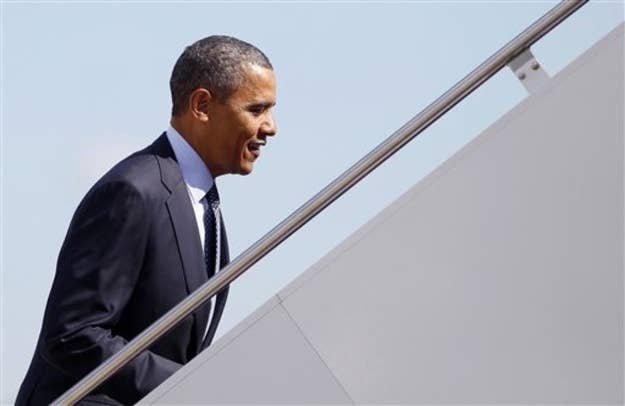
$25 million in ads and what does President Barack Obama campaign have to show for it? Stagnant or sagging poll numbers, an opponent who’s finally showing fight, and dissension in the ranks.
In May, the Obama campaign devoted $25 million to campaign ads, most of it to a slew of positive spots highlighting his record on issues from health care to the auto-bailout. One featured an Ohio autoworker hailing Obama for “sticking his neck out” for the industry. In another, Obama explains why he decided to bail out the car companies. A third is simply an animated chart showing job growth under Obama’s tenure in office, ending with a text overlay “Do we really want to reverse course now?”
The investment has not paid off, by the standard measure of ads’ effectiveness, polling. While Mitt Romney’s numbers jumped in May — largely the result of him solidifying support among Republicans after the primary — Obama’s numbers barely moved in some surveys; in others, they went down. Obama averaged a 47-percent job approval rating in May — the same as in April — according to Gallup surveys. In a head-to-head with Romney nationally Obama’s numbers remained within the margin of error. And in a series of swing states like Iowa, Wisconsin, and Colorado, Obama ceded ground to Romney. The Republican candidate also pulled even with Obama in swing states like Nevada, Colorado, and Iowa in the latest NBC News/Marist poll.
The recent polls “would suggest that the [Obama] ads had no effect or the opposite effect,” said Republican pollster Whit Ayers.
The media spending, of course, faced what the president recently referred to as “headwinds.” Economic data set a gloomy backdrop. And the Karl Rove-backed Super PAC American Crossroads launched a $25 million ad campaign to match Obama’s.
But if the Rove and Obama ad buys did offset, it sets a troubling precedent for Obama, who faces hundreds of millions of dollars in outside spending that he will have to match just to hold his ground.
And the president’s first salvo also brought with it advantages. Rove’s buy didn’t get nearly the attention, and repetition from the mainstream media as did a new negative salvo from the Obama campaign, which made up a small portion of the overall paid television advertising, but which brought with it a wave of unflattering attention to Romney’s career at Bain Capital.
Indeed the month — and the positive spots — were to some degree overshadowed by a fierce debate over the campaign’s perceived attack on Bain Capital and private equity.
The Obama campaign only devoted $100,000 to its two-minute “Steel” ad that attacked Mitt Romney’s record at Bain Capital and drew condemnation from many Democratic allies for demonizing private equity.
The campaign denies that the May’s spending on the first contact of the election was wasted.
“I don’t think anything didn’t work,” said a campaign spokesman. In fact, the spokesman said the campaign was so happy with the anti-Bain ad “Steel” that they twice increased the ad buy — albeit by a single airing each time. (The ad, Obama senior adviser David Axelrod, was not meant to be seen, but “really meant to begin a discussion.”
But despite their statements to the contrary, the Obama campaign has embarked on a clear shift. Moving on from Bain, Obama officials are targeting Romney’s record as governor of Massachusetts, launching a $10 million buy for their new ad — about 100 times the size of the Bain buy.
And beyond the Democratic backlash, it’s far from clear whether the Bain attack trickled down to voters. More than half of Americans said they had no opinion on Bain or didn’t know enough about it in an NBC News / Wall Street Journal poll released last month after the Obama campaign launched its attacks.
Obama campaign officials point to headlines in swing-state newspapers that refer to Bain Capital, and openly doubt whether the Democratic skepticism of the attack is filtering down.
“What’s happening in the Acela corridor — that is solely an elite conversation,” said the Obama spokesman. “Our focus day in and day out is in what’s in the paper and on the news in Cleveland, and Raleigh and in Grand Junction and in St. Petersburg.”
Other Democrats are less sanguine.
One Democratic operative equated the new ad with “waving a white flag” on Bain after Democrats turned on the attack — that also signaled that some of Obama’s positive spots were also missing their mark.
“If something is working you put more money behind it — you don’t launch a different attack, you exploit the vulnerability,” the operative said.
And Axelrod, on a call with reporters Monday, pledged to “continue that discussion,” but Obama campaign messaging of late has included little on the subject of Bain.
But the Romney campaign is viewing the exchange as a victory, and looking to exploit their advantage.
“They’ve made a Solyndra-esque investment in their advertising and ground-game and received similarly dismal results,” crowed one Romney aide, who pointed to a recovery in Romney’s approval rating in recent polling. "Not only is President Obama not going anywhere, Gov. Romney is gaining.”
The Romney aide also said they view Obama’s early failure to move the dial as encouraging: “$25 million in a month — you’d expect to see some movement.”



